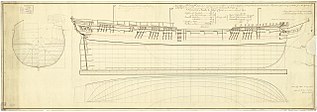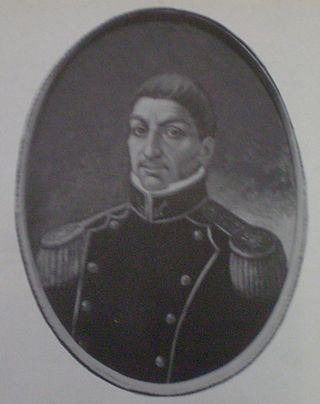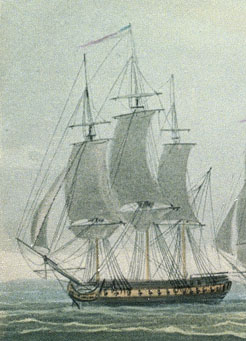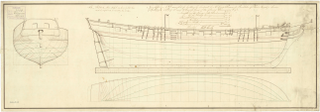Many vessels have been named Triton or Tryton, after Triton, the son of Poseidon and Amphitrite, and the personification of the roaring waters:

HMS Naiad was a Royal Navy fifth-rate frigate that served in the Napoleonic Wars. She was built by Hall and Co. at Limehouse on the Thames, launched in 1797, and commissioned in 1798. She served in the French Revolutionary and Napoleonic Wars, and her last actions occurred in 1824–5. She was paid off in 1826. She then served for many years in Latin America as a coal depot, first for the Royal Navy and then for the Pacific Steam Navigation Company. She was broken up in 1898, 101 years after her launching.

HMS Boadicea was a frigate of the Royal Navy. She served in the Channel and in the East Indies during which service she captured many prizes. She participated in one action for which the Admiralty awarded the Naval General Service Medal. She was broken up in 1858.
HMS Meleager was a 32-gun Amazon-class frigate' that Greaves and Nickolson built in 1785 at the Quarry House yard in Frindsbury, Kent, England. She served during the French Revolutionary Wars until 1801, when she was wrecked in the Gulf of Mexico.

HMS Acasta was a 40-gun Royal Navy fifth-rate frigate. She saw service in the French Revolutionary and Napoleonic Wars, as well as the War of 1812. Although she never took part in any notable single-ship actions nor saw action in a major battle though she was at the Battle of San Domingo, she captured numerous prizes and rid the seas of many Spanish, French and American privateers. She was finally broken up in 1821.

HMS Lark was a 16-gun ship sloop of the Cormorant class, launched in 1794 at Northfleet. She served primarily in the Caribbean, where she took a number of prizes, some after quite intensive action. Lark foundered off San Domingo in August 1809, with the loss of her captain and almost all her crew.

HMS Zenobia was an 18-gun Cruizer class brig-sloop launched 7 October 1807 by Brindley at King’s Lynn. Although she served during the Napoleonic Wars she is known for her role in two events, the claiming of Ascension Island for Great Britain in 1815, and the naming of the Saumarez Reefs in 1823. She was broken up in 1835.

HMS Emulous was a Royal Navy 18-gun Cruizer-class brig-sloop, built by William Row at Newcastle and launched in 1806. She survived an inconclusive but bloody battle with a French frigate during the Napoleonic Wars and captured a number of prizes, including two privateers, on the Halifax station during the War of 1812 before she was wrecked in 1812.

Juan Bautista Azopardo-Native name Ġann Patist Azzopardi was a Maltese privateer and military man who fought under the flags of the Netherlands, Spain, and Argentina.

HMS Medusa was a 32-gun fifth-rate frigate of the Royal Navy that served in the Napoleonic Wars. Launched on 14 April 1801, she took part in the action of 5 October 1804 against a Spanish squadron, in the River Plate Expedition in 1807, and made several captures of enemy ships, before being converted to a hospital ship in 1813. She was broken up in 1816.
HMS Moucheron was a French privateer, built in 1799, that the British captured in 1801. The British government purchased her in 1802 for the Royal Navy. She foundered in 1807 in the Mediterranean without leaving a trace.
William Josephus Stafford (1781–1823), also known as William S. Stafford and Jose Guillermo Estifano, was a sea captain and privateer during the War of 1812 and afterward.
José Joaquim Almeida, was a Portuguese-born American privateer who fought in the Anglo-American War of 1812 and the Argentine War of Independence.

HMS Moselle was a Cruizer-class brig-sloop of the Royal Navy, launched in 1804. She served during the Napoleonic Wars in the Mediterranean, the Caribbean, and the North American station. She was sold in 1815.

HMS Diligence was the name ship of her class of brig-sloops of the Royal Navy. She was launched in 1795 and lost in 1800. She spent her brief career on the Jamaica station where she captured four armed vessels, one of them after a short engagement, and many small Spanish and French merchant vessels in the Caribbean inter-island and coastal trade.
The French corvette Robuste was a vessel built at Nantes in 1789 as a slaver that made her first and only slave-trading voyage in 1789-90. The French navy purchased her in December 1793 and she served as a 22-gun corvette in the Channel. The British captured her in 1796 and took her into the Royal Navy as HMS Scourge. She captured a number of French privateers, primarily in the West Indies, before the navy sold her in 1802.
HMS Florentina, was the Spanish frigate Santa Florentina, built in 1786 at Cartagena, Spain to a design completed on 17 October 1785 by José Romero Fernández de Landa, modified from his earlier design for the Santa Casilda. The British Royal Navy captured her on 6 April 1800 and took her into service as HMS Florentina. She served in the Mediterranean until she returned to Britain in 1802 after the Treaty of Amiens. There the Admiralty had her laid-up in ordinary and she was sold in 1803.
Albuera was launched at Aberdeen in 1826. An Argentine privateer seized her in late 1828 and she was detained until March 1829. She was wrecked on 24 October 1829.
Agreeable was launched at Bermuda in 1786, probably under a different name. French owners acquired her at some point and sailed her as Agréable. In 1793 the British captured her. Subsequently, between 1793 and 1808, she made six voyages as a slave ship, alternating between the triangular trade in enslaved people, and sailing as a regular West Indiaman. French privateers captured her between the second and third voyages, and the third and fourth voyages, but each time the British Royal Navy recaptured her. In the case of the second capture she was in French hands long enough for them to send her out as a privateer. She herself captured an American vessel in 1808 as she was returning to Liverpool from her last enslaving voyage. After the end of British participation in trans-Atlantic enslaving trade, Agreeable traded more widely, particularly to South America. She was condemned at Buenos Aires in 1814 after running aground in the River Plate. She was repaired and continue to sail to Brazil until she returned to Liverpool in June 1819.

HMS Triton was a 32-gun fifth-rate frigate of the Royal Navy designed by James Gambier and launched in 1796 at Deptford. Triton was an experimental ship and the only one built to that design; she was constructed out of fir due to wartime supply shortages of more traditional materials and had some unusual features such as no tumblehome. Her namesake was the Greek god Triton, a god of the sea. She was commissioned in June 1796 under Captain John Gore, with whom she would spend the majority of her active service, to serve in the Channel in the squadron of Sir John Warren.









